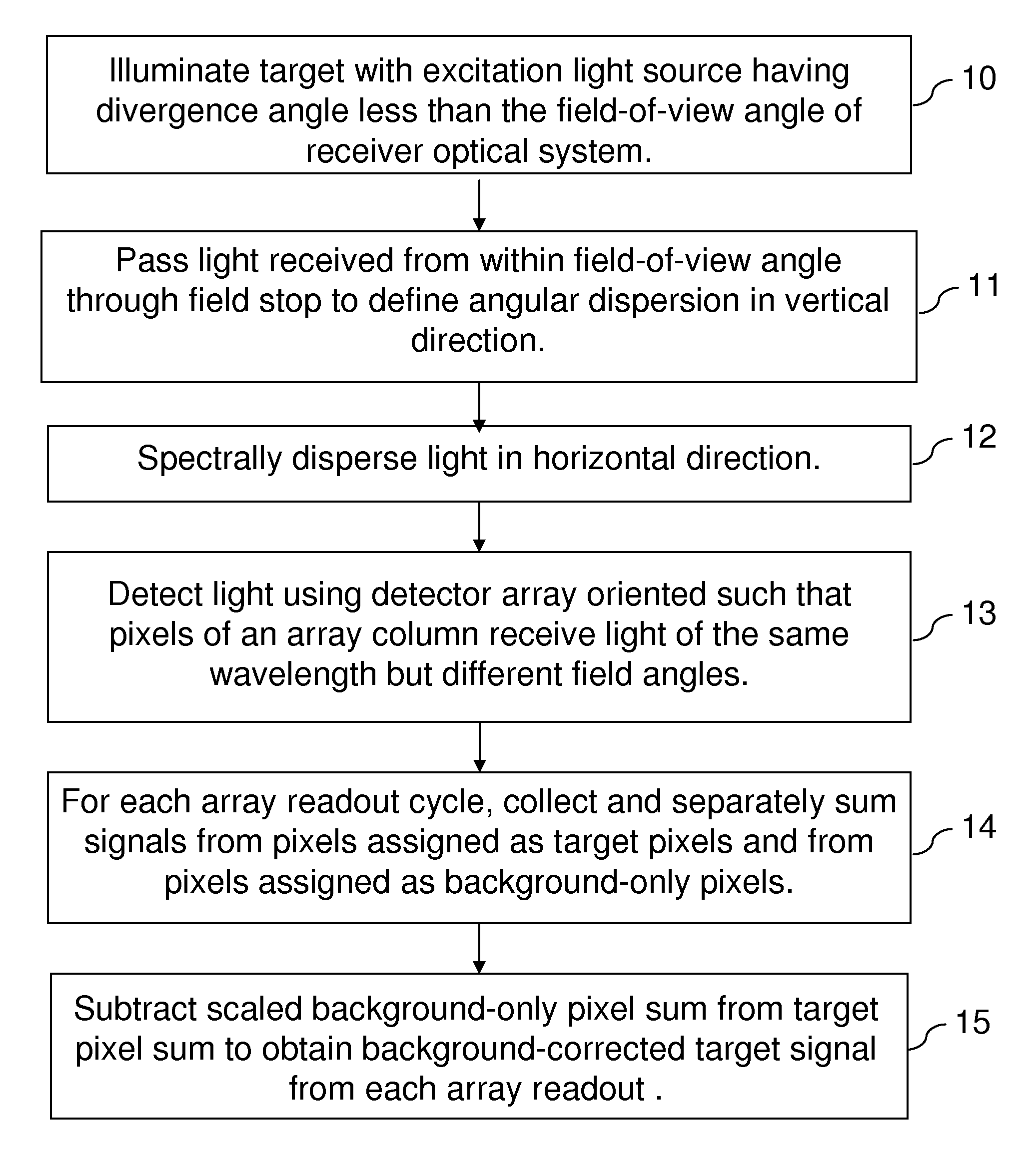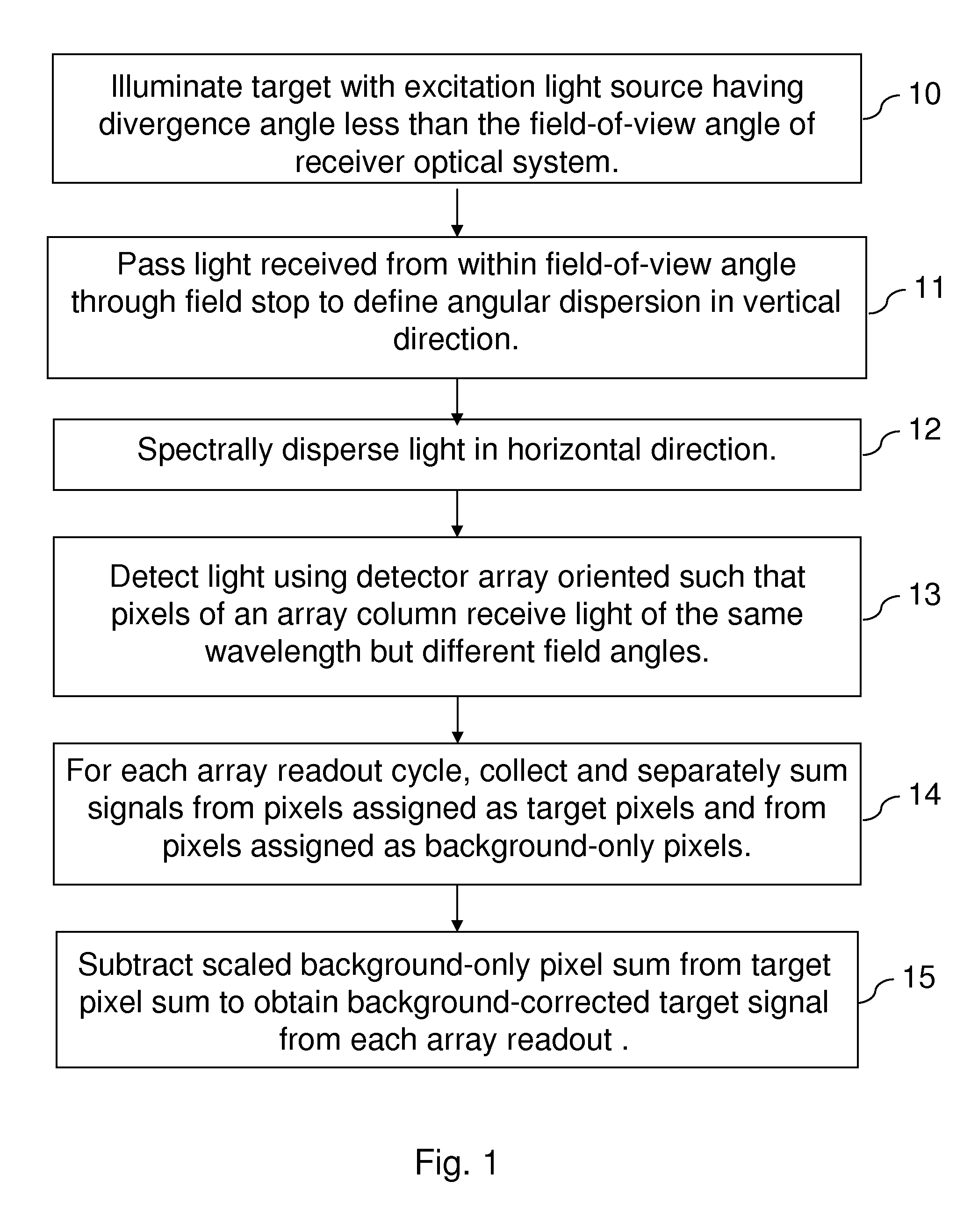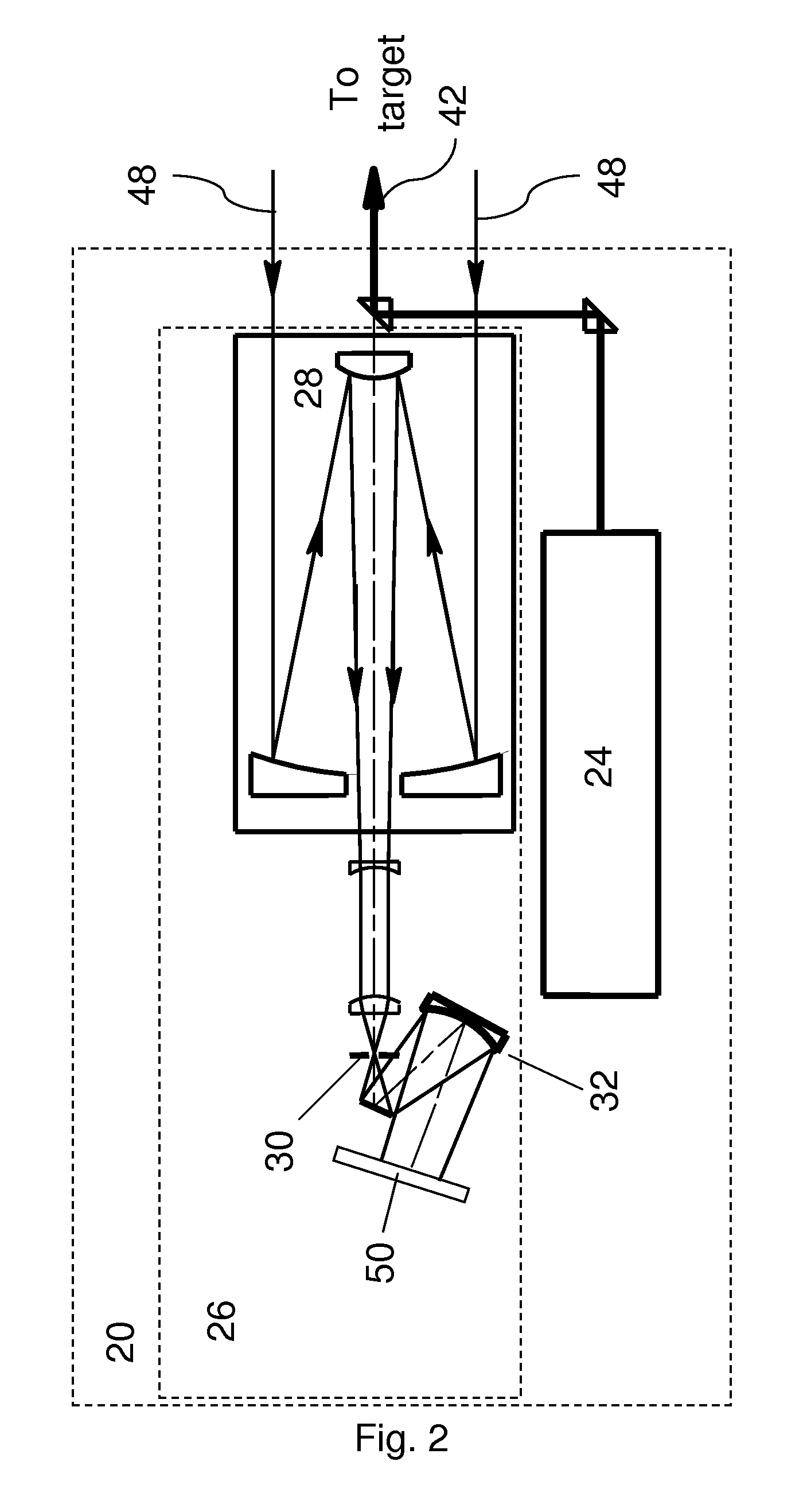Passive background correction method for spatially resolved detection
a background correction and spatial resolution technology, applied in the direction of optical radiation measurement, distance measurement, instruments, etc., can solve the problems of increasing the uncertainty of the magnitude of the actual signal, the increase of the intensity of passive lighting sources,
- Summary
- Abstract
- Description
- Claims
- Application Information
AI Technical Summary
Problems solved by technology
Method used
Image
Examples
Embodiment Construction
[0017]This invention comprises a method for passive background correction during spatially or angularly resolved detection of emission that is based on the simultaneous acquisition of both the passive background spectrum and the spectrum of the target of interest. For purposes of the description of embodiments of the invention, the term simultaneous refers to events and actions occurring within approximately the time corresponding to a readout cycle of a pixelated detector array or to a round-trip transit time of a single laser pulse to a remote target and back to the receiver optical system. For the purposes of description, the terms laser light, laser beam, and laser pulse are employed for convenience, but it is to be understood that other collimated light sources with beam divergence angles less than the field-of-view angle of the receiver optical system may also be used. For the purposes of this invention, a target can comprise a solid, a liquid, or a gas; it can comprise a pure...
PUM
 Login to View More
Login to View More Abstract
Description
Claims
Application Information
 Login to View More
Login to View More - R&D
- Intellectual Property
- Life Sciences
- Materials
- Tech Scout
- Unparalleled Data Quality
- Higher Quality Content
- 60% Fewer Hallucinations
Browse by: Latest US Patents, China's latest patents, Technical Efficacy Thesaurus, Application Domain, Technology Topic, Popular Technical Reports.
© 2025 PatSnap. All rights reserved.Legal|Privacy policy|Modern Slavery Act Transparency Statement|Sitemap|About US| Contact US: help@patsnap.com



